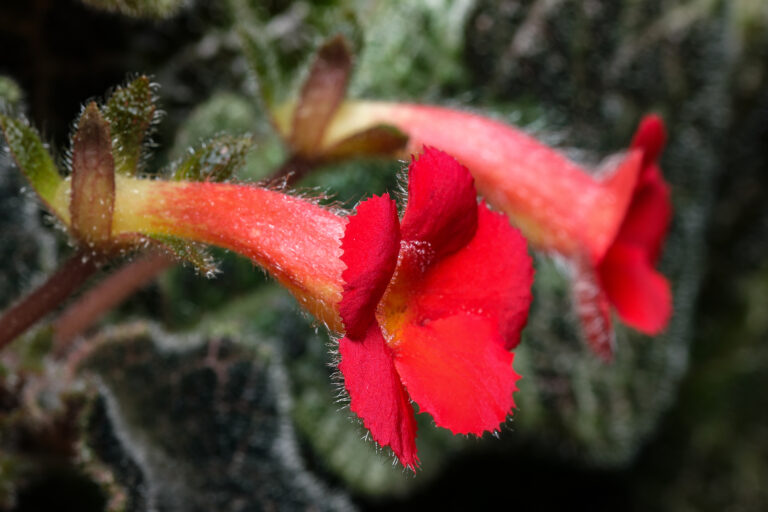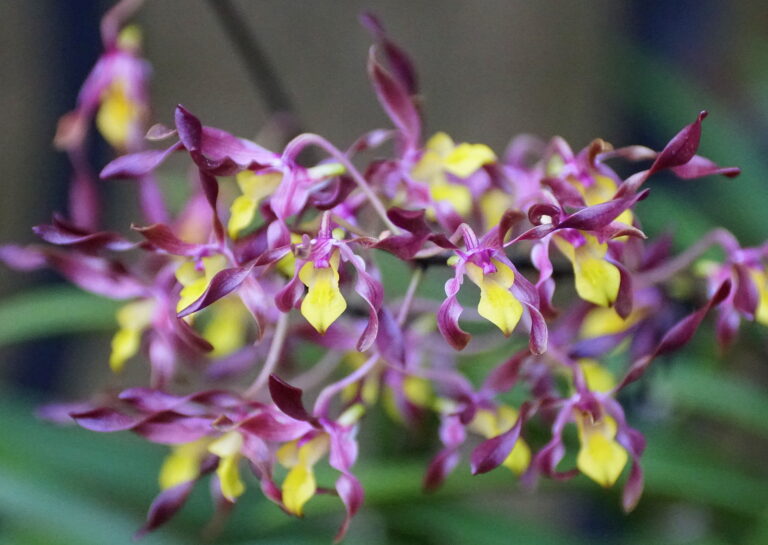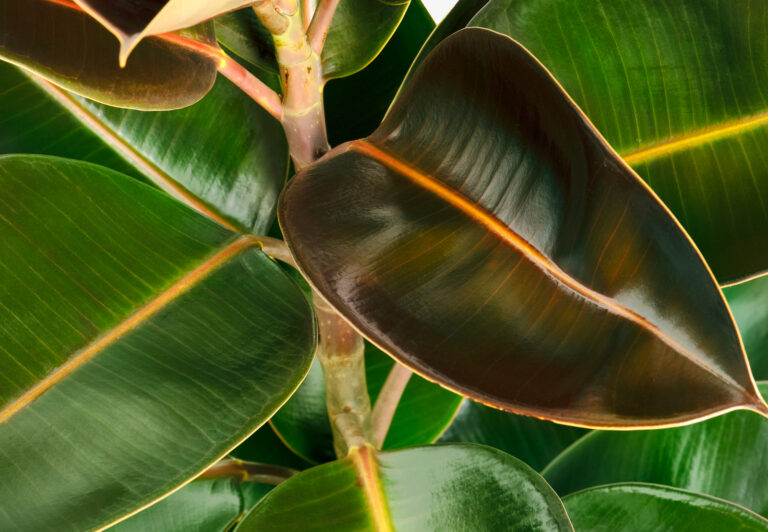How to Grow Kalanchoe
Kalanchoe is one of the most popular flowering houseplants. It features light-green, glossy, succulent foliage and masses of miniature brightly colored blooms in shades of orange, pink, red, and yellow that bloom in winter.
Give kalanchoe lots of bright light, and keep it on the warm side. It will withstand occasional dryness, but water thoroughly after you’ve neglected it. Simply pinch back leggy or spindly growth after the blooming period.
There are two basic types of Kalanchoe — Kalanchoe blossfeldiana and K. manginii hybrid. Kalanchoe blossfedliana is by far the more popular and is the one growers induce to flower at any season–although spring is the natural flowering season. The leaves turn reddish in sunlight and the late flower heads last for many weeks. Kalanchoe bears large and pendant bell-shaped flower.
Kalanchoe grows to about 12 inches (30 cm) tall. Kalanchoe is a good specimen for window gardens. There are about 125 species in the Kalanchoe genus.
Get to know Kalanchoe
- Plant type: Succulent evergreen perennial
- Growing Zones and range: 9-11
- Hardiness: Tender
- Optimal growing temperature: day, 68° to 70°F (20° to 21°C); night, 50° to 65°F (10° to 18°C). Provide cool conditions 50°-60°F (10°-16°C) in fall while buds are forming, then move to average room temperature
- Height and width: 6 to 12 inches (15-30cm) tall
- Foliage: Succulent, waxy, deep green, rounded leaves 3-inches across
- Flowers: Clusters of red, pink, lilac, orange, yellow, or white on 12-inch (30cm) stems
- Bloom time: Usually in spring, blooms for 2 to 3 months
- Uses: Houseplants can be grown as a perennial outdoors in arid, mild-winter regions
- Common name: Kalanchoe, Flaming Katy, panda plant, velvet leaf
- Botanical name: Kalanchoe blossfeldiana
- Family: Crassulaceae
- Origin: Saudi Arabia, Yemen, Central Africa, South Africa
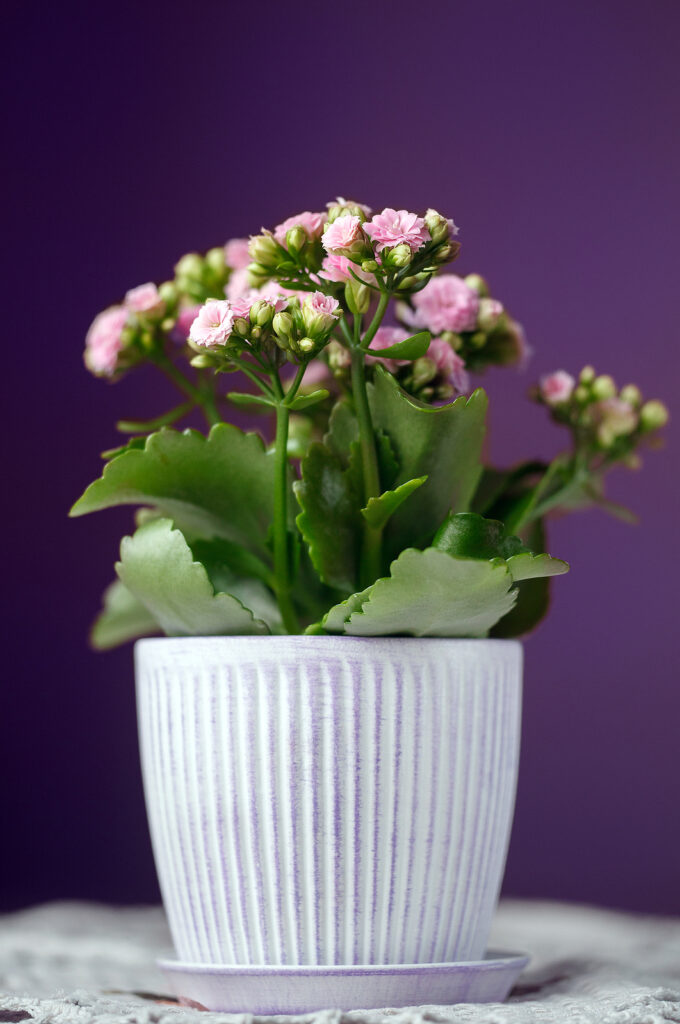
Where to plant Kalanchoe
- Kalanchoe blooms heaviest when it gets direct sun which turns the leaves reddish; place in an east or west window in summer, and in a south window in winter
- Grow kalanchoe in an all-purpose potting mix with added sand.
When to plant Kalanchoe
- Set kalanchoe outdoors in mild-winter regions.
Planting and spacing Kalanchoe
- Space kalanchoe 6 to 12 inches (15-30cm) apart.
How to water and feed Kalanchoe
- Keep the soil barely moist. Let the soil dry between waterings. Do not overwater.
- Do not let water touch the leaves when watering.
- Kalanchoe prefers humidity of 20% to 25%.
- Feed Kalanchoe every 2 weeks in spring before flowering, with mild high-phosphorus fertilizer. Feed K. blossfeldiana every 2 weeks while in flower.
- Fertilize with fish emulsion once a month from when blooming ends until late summer.
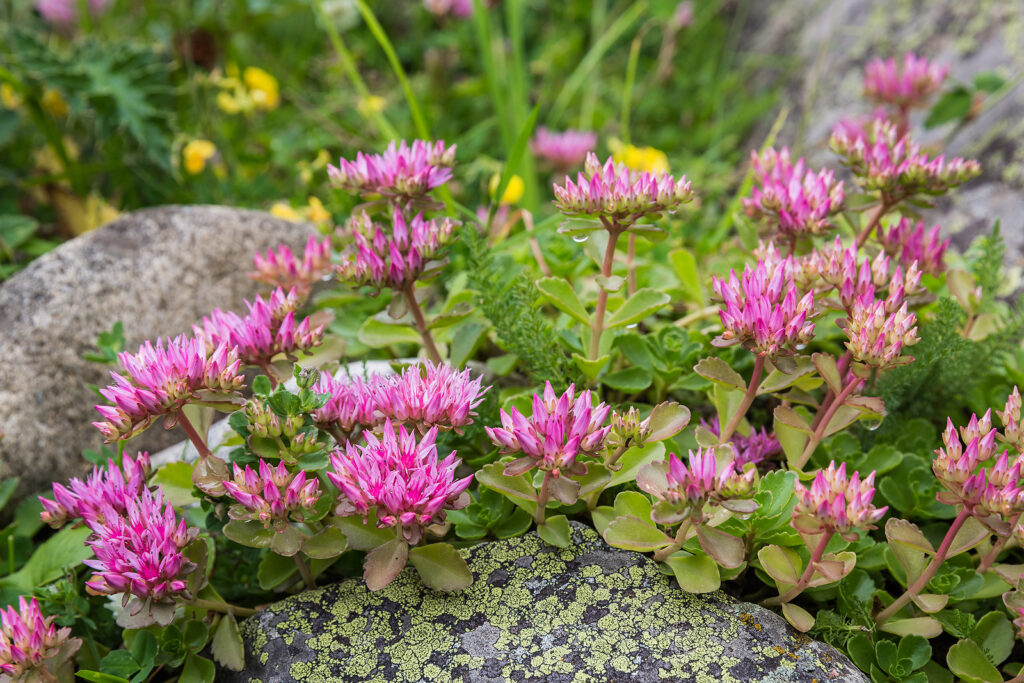
Kalanchoe care
- Put the plant outdoors for the summer, then give it a cool, drier rest period in the fall to encourage bud formation.
- Aphids and mealybugs may feed on the leaves and stems; knock pests off with a strong stream of water or spray with insecticidal soap.
- To intensify flower color and extend the blooming period, place plants in a cool room after the flower buds have formed.
- Pot-on Kalanchoe when pot space is overcrowded. Trim stems to promote blooming and retain a bushy shape. Remove old flower stalks.
- Kalanchoe enters a dormant period in the fall. Provide normal light in a cool site, 50° to 55°F (10° to 13°C). Let the soil dry between light waterings; withhold fertilizer.
- Kalanchoe does not rebloom readily. To make K. blossfeldiana bloom another season, trim stems below flowers, above the first set of mature leaves, once flowering is completed. For 4 months alternate 14 hours of total darkness with 10 hours of light.
Growing Kalanchoe as a houseplant
- Kalanchoe needs direct sun, average room temperature, and low humidity.
- To intensify flower color and extend the blooming period, place plants in a cool room after the flower buds have formed.
- Grow in a well-drained soilless medium and allow it to dry slightly between waterings.
- When watering, do not allow water to touch the leaves which may cause spotting and disease.
- The soil can be allowed to dry substantially between waterings.
- Fertilizer should be applied every two weeks in spring and summer; do not fertilize when Kalanchoe is in flower.
- After flowering prune the tops and place the pot on a shady windowsill.
- To force Kalanchoe to bloom in summer, fall, and early winter, place it in a totally dark place for 14 hours a night for six weeks.
Kalanchoe pests and diseases
- Aphids and spider mites may attack kalanchoe; mildew and root and crown rot are potential problems.
- Root and crown rot are potential diseases.
Kalanchoe propagation
- Take stem or leaf cuttings in summer or grow plants from seed.
Kalanchoe varieties to grow
- Miniature kalanchoes include ‘Tom Thumb’ and ‘Compact Lilliput’.
- Kalanchoe beharensis, velvet elephant ear. The treelike, silvery felted plant has crimped furry triangular to lance-shaped leaves; up to 8 feet. Good indoor or outdoor plant.
- K. blossfeldiana. Green waxy oval to oblong glossy, dark green leaves; tubular flowers on long stalks are red, yellow, orange, or salmon. Popular Christmas plant.
- K. daigremontiana. Pale lilac flowers; leaves bear light green and red markings.
- K. fedtschenkoi, rainbow kalanchoe. Bluish gray leaves with red-tinged, notched edges; flowers are peach colored.
- K. tormentosa, panda plant. Tapered white-felted leaves covered with brown dots; bell-shaped, green-yellow flowers tinged with purple. Very attractive potted plant.
Kalanchoe frequently asked questions
Q: What are the proper sol and proper care to ensure Kalanchoe blooms?
A. The soil should be moderately rich and quite porous. Indoors use commercial potting mix recommended for succulents. Grow Kalanchoe in full sun. Repot plants as roots fill the pot. Water freely when the plant is actively growing and feed using an all-purpose fertilizer at half strength.
Q: Why do leaves fall off Kalanchoe?
A: Leaf drop is usually due to a sudden change in environment, particularly to drier indoor air. If you are bringing the plant indoors for winter, do so a few weeks before you start running the furnace. Keep the soil fairly moist but not wet.
Q: How can I grow Kalanchoe successfully indoors?
A: Kalanchoe needs average warmth, not less than 50F in winter. Place the plant in an east or west-facing windowsill from spring to autumn and in a south-facing window in winter. Water thoroughly but let the soil surface dry between waterings. Repot every year after the spring rest period.


